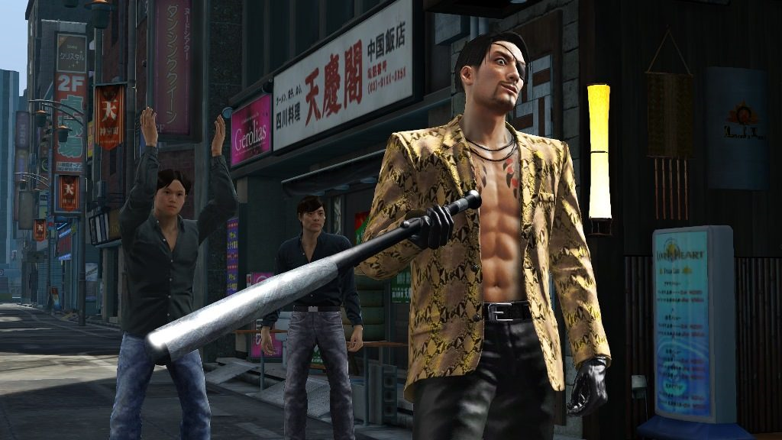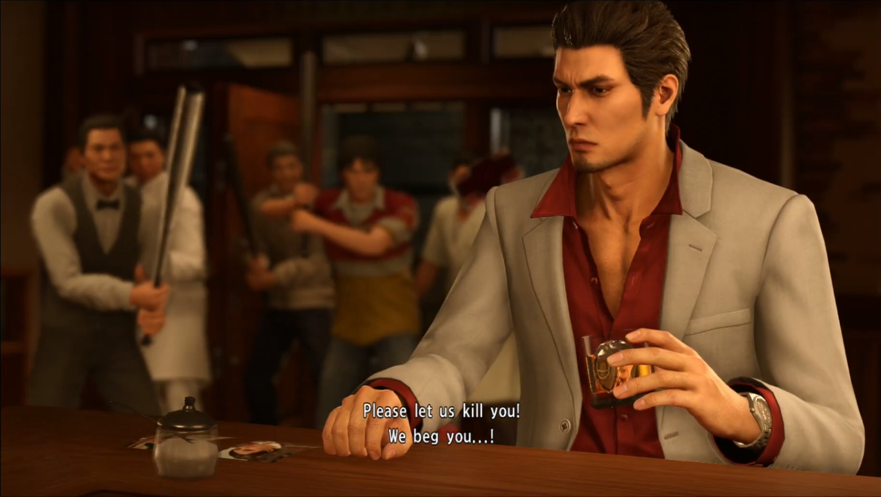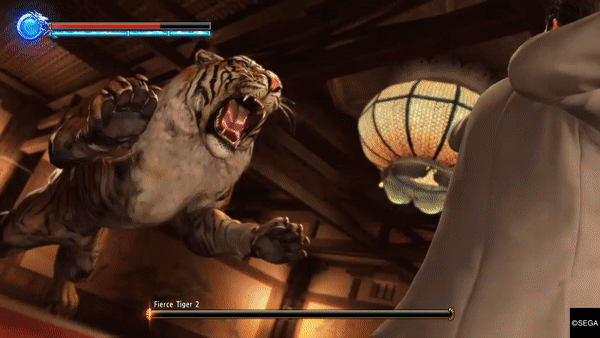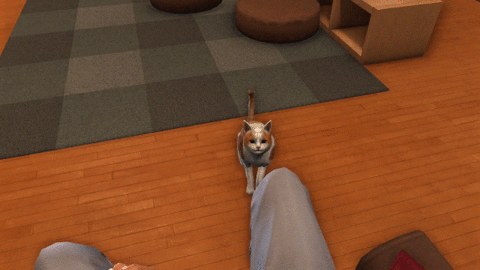In the grand arc of video game history, we are at the point where obscurity is now a relative concept – since distribution has exponentially improved and online chatter has talked up even the most bizarre concepts and franchises to a pseudo-mainstream level – but there are still series that are so uniquely committed to carving out their own specific corner of the medium that they’ll never quite hit the heights of a Call of Duty or Super Mario, but are absolutely still worth your time and energy.
With that in mind, you should play the Yakuza games.

Okay. Pushy. What are the Yakuza games?
Yakuza (or Ryū ga Gotoku as it is known in Japan – which roughly translates to Like a Dragon) is a multiplatform series of 3-D action/role-playing games that began on the Playstation 2; its most recent release (which just dropped on Februrary 11th) is Yakuza Remastered Collection on Playstation 4, which combines Yakuza 3-5 into one package and for the first time makes the entire mainline series playable on one console.
At first blush, the closest analogue to the series is likely Grand Theft Auto, due to its themes of organized crime and free-roaming 3D world map – but really it’s closer to fellow Sega franchise Shenmue thanks to its sprawling narrative and plethora of goofy side activities, or a 3-D version of the classic NES game River City Ransom thanks to its urban setting, wacky sense of humor, random street fights, and food-based level-up system. Pick up a Yakuza game and you’re in for 20-30+ hours of outstanding serialized crime drama and brutal street fights punctuated by the occasional stop at a crane game to make a random child happy, hitting the driving range, or even managing a nightclub. They also act as unique and interesting takes on Japanese history and culture – for instance, Yakuza Zero comments on the 1980s Japanese bubble economy by making money absurdly plentiful and tying excessive spending to improving your stats.

Who am I and what am I doing in these games?
The Yakuza series bounces between time periods and protagonists as it goes on, but the bulk of the franchise’s story is built around the story of Kazuma Kiryu, a former yakuza who steps away from the life after doing time for a crime he did not commit but keeps getting dragged back in out of a sense of loyalty and duty. Kiryu is, without hyperbole, one of the greatest video game characters of all time. I asked my wife, a fellow fan and my partner-in-crime playing through the series thus far how best to describe him. In her words:
“We don’t deserve him and we should all try to be like him.”
Kiryu is a thoroughly honorable and good-hearted man (with lovably dated fashion sense) and in many ways the moral rock of the series – despite his criminal background and his reputation as a ferocious and unstoppable fighter, he is fiercely loyal to his friends and those on the margins of society, making time to protect the homeless or help a struggling family reconcile after a loss. Over the course of the series, he adopts a young girl named Haruka and becomes her guardian, opening up an orphanage to take care of her and other children who, like him, had nowhere else to go. Collectively, the saga spans multiple decades and it’s thoroughly rewarding to see where Kiryu ends up.
While the main narratives are genuinely fascinating and tell a complete and satisfying arc across all six entries, the real attractions are often the plethora of “sub-stories” that fill each game and range from the hilarious to the heartbreaking – in fact, “interviews” with the people he helps in sidequests throughout the series were the focus of the incredibly effective online ad campaign for Yakuza 6. While optional, these mini-arcs color in much of the setting’s personality – though it is worth noting that the humor in a few of the sub stories may be somewhat offensive, stereotyped, or not to everyone’s tastes (chalk at least some of it up to cultural differences). Many sub stories continue throughout multiple games in the series, rewarding attentive fans with the chance to check in on some of their favorite minor characters. Because the games all take place in the fictionalized Tokyo district of Kamurocho and the map generally stays consistent between games, taken as a whole the setting itself becomes a thriving and consistent part of the narrative throughout the series. Over time you get to know the city, check in on its residents and their problems, and feel like you’re making a positive impact. And of course, if you need a break from making people’s lives better through judiciously applied violence or awkward social encounters, you can even help rescue stray cats for a cat café, check out the local restaurants, and sing karaoke.
Speaking of “judiciously applied violence” – as you make your way through sprawling soap opera of crime and intrigue in each game, you’re also fighting. A lot. Random encounters with street toughs are commonplace, and Kiryu often dispatches of them using contextual “heat moves” that act as hilariously brutal and over-the-top finishing moves that consist of everything from breaking a bicycle over a man’s head to splashing hot sauce in their face to frying them in a convenience store microwave. Despite the obvious physical toll these actions will take (often the recipient of such a beating should by all rights be dead), the enemies still get up and beg for forgiveness or run away, leading some to wonder if the fights are largely metaphorical. Other sequences involve Kiryu punching out literal tigers or fighting assassins on top of a van roaring down the highway – if you had to identify the Yakuza aesthetic, it is to find “over the top” and then use that as a stepping stone to get to where it really wants to go.
Just look at these GIFs:




Sold. So how should I get into this?
The nice thing about Yakuza is that publisher Sega has responded to the diehard Yakuza following outside of Japan by making nearly all of the games available in localized form, retaining the original Japanese voice acting with English subtitles in the cinematic cutscenes and providing outstanding localizations for the rest of the massive amount of text that makes up the game’s narrative. It’s vastly preferable to Sega’s attempt to localize the original Yakuza in the wake of Grand Theft Auto 3, casting trendy (and more importantly affordable) celebrities to provide an English dub with…questionable results.
Currently, the easiest way to play the series is on Playstation 4, where Yakuza 1-6 and the prequel Zero are all available and as of right now fairly easy to come by and affordable. The numbering can be somewhat confusing due to the fact that some of the games are significant overhauls from earlier platforms like the Playstation 2 and others are simply ported – Yakuza Kiwami 1 and 2 are both full-fledged remakes of the first two games in the series and should be considered as such. Sega has also begun porting the games to PC, with the first three chronological games in the series now available, and Microsoft announced they will be available on Xbox One this year as well.
Playing all of these games is a massive undertaking, but it’s worth at least trying some of them out – Yakuza is a fascinating series that is equal parts gripping drama, violent punch-em-up, silly meme fodder, and surprisingly kind-hearted humanism and there just isn’t anything else like it out there. The best way to play through the games is in chronological order, starting with Zero – the 1980s-set prequel that covers the early days of Kiryu and his perpetual friend and rival Goro Majima (who could have an entirely separate article written about him). It’s arguably one of the best and most moving stories in the series (Majima’s story in particular) and plays exceptionally well. From there, go to Kiwami 1, Kiwami 2, and then 3-6. It is possible to play them out of order – I did – but they’re all trips worth taking and many late-series events just land better if you have the context for them. A new entry in the series, Yakuza 7: Like a Dragon, which eschews the real-time combat for a take on turn-based role-playing games, was released in Japan in January and should be hitting North America some time later this year as well.
Until next time, stay hydrated.

By Dr. Bryan Carr
Bryan Carr is an Associate Professor in the Communication, Information Science, and Women’s & Gender Studies departments. Among other things, he is the host and producer of “Serious Fun”, a podcast taking an academic look at popular culture on the Phoenix Studios podcast network. You can use a swordfish as a weapon in these games, folks.

I was on the fence until the cat gif; I’m sold.